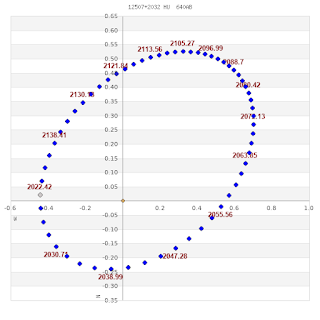HU 739 AB: 508; 300x: Light orange star, with a quite faint but directly seen companion, fairly well separated, PA southwest. WDS grade 5 orbit, 307-year period. There is 37% overlap of the parallax ranges, only 23 AU weighted separation, 0.5+0.3 Msol, so it is highly likely to be binary. It will widen to 2.5" and lie closer to due south by 2042.
13h 06m 15.40s +20° 43' 45.1" P.A. 197.00 sep 1.8 mag 9.72,12.11 Sp K4V dist. 18.8 pc (61.33 l.y.)
HU 640 AB: 508; 400x: Excellent pair, nicely split, light orange stars, slight delta mag, WSW. 0.442" now. WDS grade 3 orbit, 124.28-year period. Unfortunately, there is no Gaia parallax data. The companion may make one quarter turn to due north by 2038.
12h 50m 41.87s +20° 32' 04.9" P.A. 262.80 sep 0.4 mag 10.19,9.91 Sp K5 dist. 38.27 pc (124.84 l.y.)
A 1851 AB: 508; 600x: Hairline split with seeing, very slight delta magnitude, very light orange stars, very fine, PA just south of east. Spectral class K4V (yellow-orange). WDS grade 2 orbit, 61.3-year period, 0.306" now. Unfortunately, no Gaia data for the secondary. A rapid mover, it will be due south by 2030 and southwest by 2040.
12h 42m 10.75s +26° 21' 39.5" P.A. 96.20 sep 0.3 mag 10.09,10.08 Sp K4V dist. 44.01 pc (143.56 l.y.)
A 570 AB: 508; 1000x: Using an apodising mask and a polarizing filter to dim the bright stars, I had very fleeting glimpses of a hairline split, but it mostly appears as a strongly notched elongation with PA to the southwest. WDS grade 1 (definitive) orbit, 29.9-year period, it is currently 0.214" and will make a quarter turn to east by 2035, and north by 2042. No Gaia parallax data for either star.
14h 32m 20.27s +26° 40' 38.4" P.A. 217.50 sep 0.2 mag 6.61,7.08 Sp A6V dist. 73.64 pc (240.21 l.y.)
COU 100 AB: 508; 600x: Extremely difficult, need best seeing, only a momentary hairline split, very noticeable difference in magnitude, PA to the northeast. WDS grade 4 orbit, 78.21-year period, currently 0.339". No Gaia data for the companion. If binary, it will be due north by 2038 at the same separation, then tighten to the northwest by 2048.
14h 45m 53.04s +23° 43' 38.2" P.A. 13.20 sep 0.3 mag 9.20,9.90 Sp G0+G5





No comments:
Post a Comment